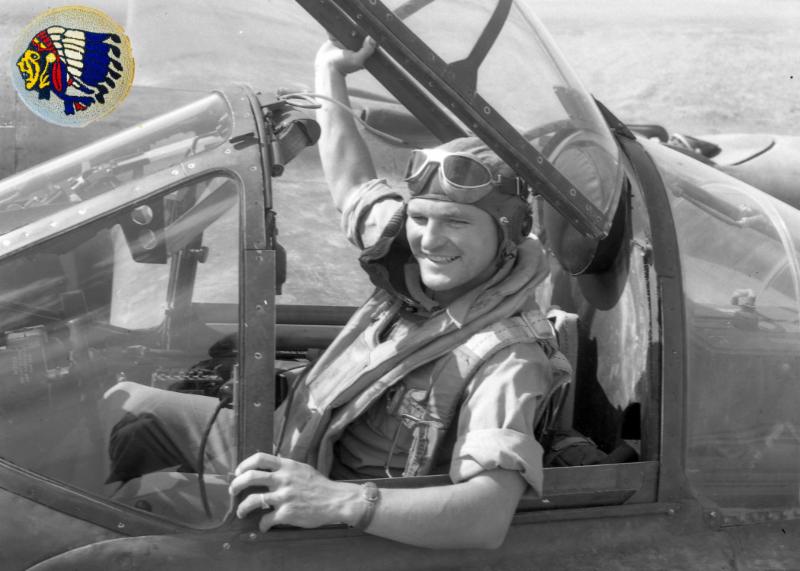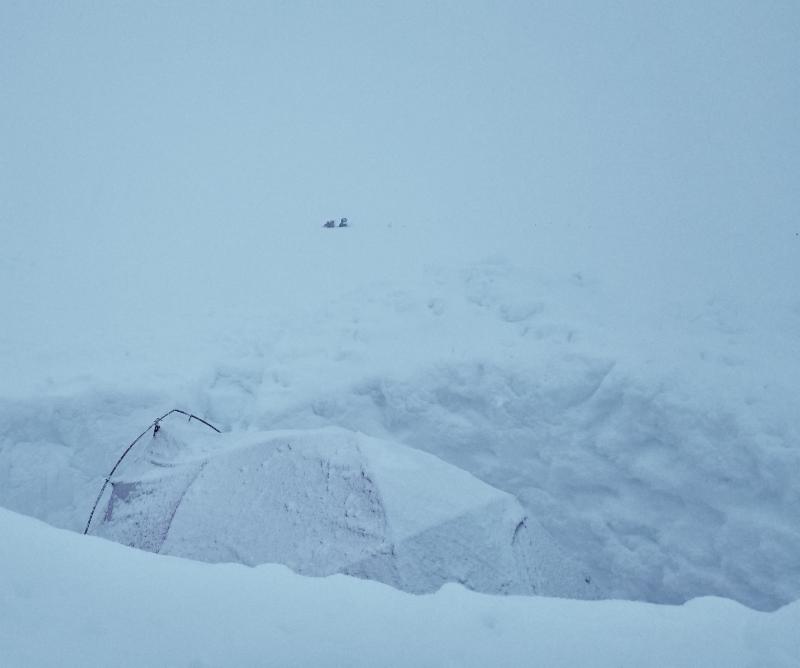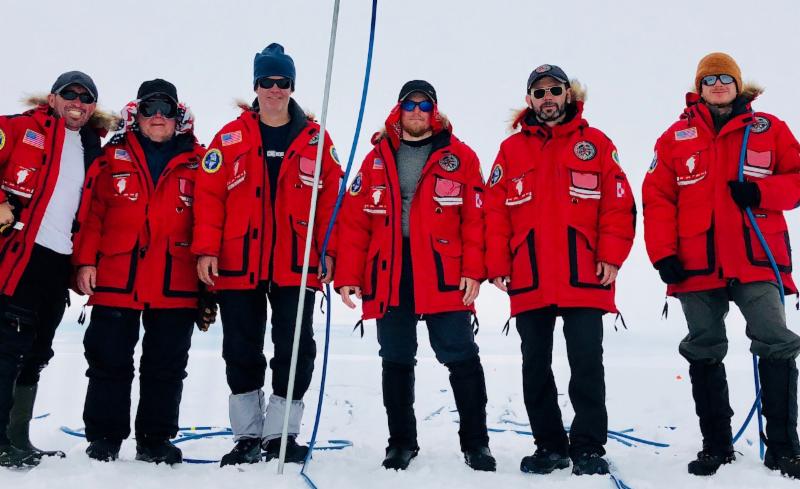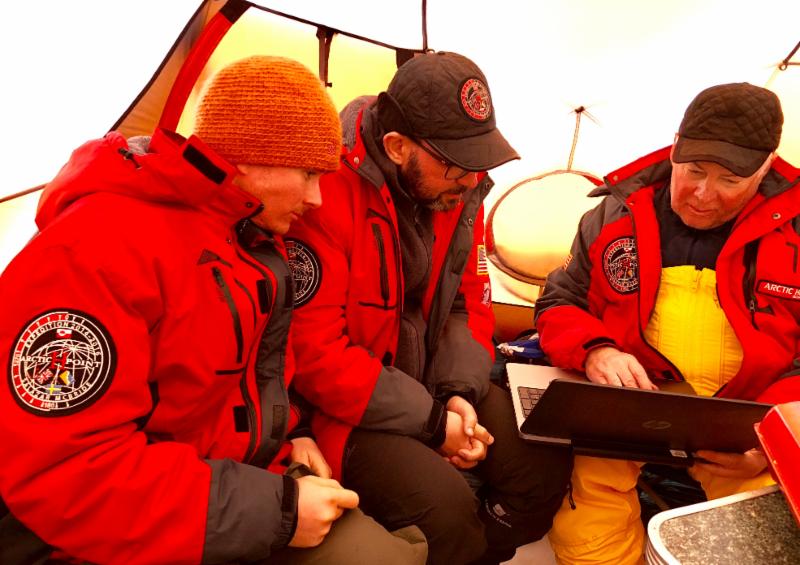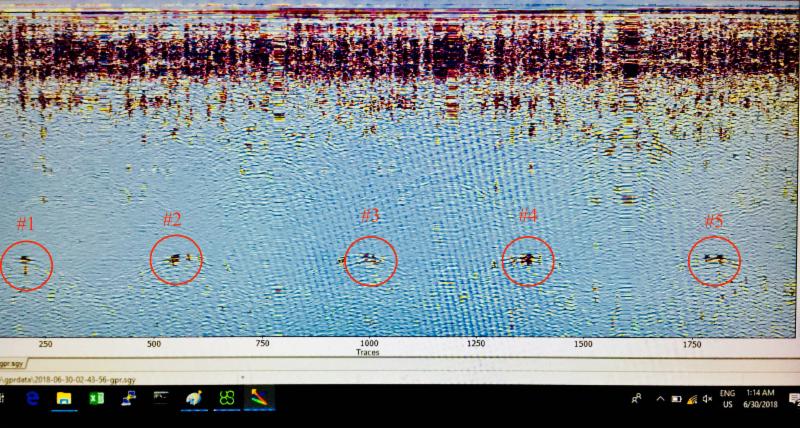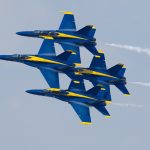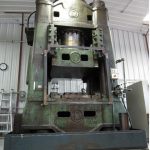Ever since the adventures of Pat Epps, Richard Taylor and the Greenland Expeditionary Society in recovering Lockheed P-38F Lightning 41-7630 from under 260 feet of ice in Greenland during the 1980s and early 90s, there has been a perpetual buzz about whether the other five P-38s and two B-17s abandoned at the same location – the legendary Lost Squadron – will ever be recovered. A number of follow-on teams have mooted going back to do the deed, but most of those efforts amounted to little more than talk. However, this may be about to change. Here is the latest installment of Arctic Hot Point Solutions efforts to locate – and hopefully recover – one of the remaining Lightnings on… or rather ‘in’ Greenland….
Our team recently returned from Greenland and an expedition out on the icecap with the goal of locating P-38 “Echo” with ground penetrating radar, and a further objective of “touching” it with a steam probe.
Our radar “find” from 2011 was projected for direction and distance, with a resulting target point established for this summer’s search.
The search grid was established with the target point as the center, and within one day, both of our radar teams located a substantial object approximately 70 yards from our target point.
The radar data does not indicate what the target is, only that a substantial object reflected the radar signal back to the surface. The reflection could be caused by a large rock, or a woolly mammoth, however, lowering a steam probe to the target resulted in a coating of red hydraulic oil, likely 5606, on the hose and pipe! Since rocks and woolly mammoths do not produce hydraulic fluid, we are quite sure this target is the P-38!
 |
The 5606 Team Digs In For A Greenland Blizzard
Despite enduring days of blizzard conditions on the ice cap, our Hot Point Solutions team stuck with it, and boy, did it pay off. On July 4, 2018, we got a positive reading on our GPR system, followed by the hydraulic oil on the steam probe, with the conclusion that we had located the Lost Squadron P-38 “Echo”. We congratulate our stalwart team who braved the blizzards and numerous other obstacles to pinpoint the position of the Lost Squadron P-38.
This year we were able to pull together a group of our guys with “The Right Stuff.” Each team member pitched in and performed duties and tasks as needed – even if outside their area of expertise. The cooperation and support by all was exceptional and without a doubt was the primary reason for the success of the operation.
With dozens of potential team members added in the last year, we are pleased to have so many interested and qualified people willing to join on board for the seasons to come. Flexibility, cooperation, attitude, and just hard work are common words used to describe what is needed for the future of our endeavors. Hot Point Solutions and the Fallen American Missing In Action Repatriation Foundation still need help for the seasons to come. There is buzz in the air and we stand poised with equipment, resources, experience, expertise.
It’s your move…join us!
Planning for the Impossible
When we send out a team update like this, we enjoy sharing with you the ups and downs of our latest projects, and highlighting our latest successes while acknowledging our setbacks.
We seldom take the time to recognize what an enormous undertaking it is to pull off something like an expedition to Greenland. While we are sure you can imagine some of the hurdles we need to clear, there are dozens of details as well that need to be dealt with to execute a successful expedition. Here are just a few items to consider:
- Proactive shipping of equipment and provisions, crates and containers full, almost a year in advance of actual dates needed!
- Obtaining permits for the expedition each year and for much-needed firearms
- Making travel plans for all participants
- Developing relationships with media outlets both in the U.S. and Greenland
- Forging relationships with tour guides, hunters, and local villagers for future support
- Further developments working with Greenlandic and Danish Supporters in Greenland
- Assuring communications systems such as satellite phones, radios, and internet services are prepared and operational
- Holding annual mountaineering, cold weather, and water rescue clinics
- Staying current with piloting skills and glacier landing training/techniques
These are just a few of the issues our team deals with prior to each expedition, and we take great pride in knowing that thorough preparation and attention to all the little details, enable safe and successful expeditions.
Radar Teams
We actually had two radar teams on the icecap this year. Mario Carnevale and Myles Danforth from Hager Geoscience are truly experts in their field and operated the GSSI MLF antenna system used successfully in the past. They performed extensive analysis on the data to pinpoint the location of the “anomaly” which we determined with a high degree of confidence, is the Lost Squadron P-38 we set out to find.
An additional radar team from east Europe, consisting of Alexy Dobrovolskiy and Janis Kuze came prepared with the Arctic Hot Point Solutions (AHPS) Heavy Lift Drone coupled with the AHPS High Power GPR Antenna system. The very unique aspect of this set-up was the fact they mounted it below a drone and flew pre-programmed grids with a GPS guidance system and specialized UgCS programming features.
The performance of this rig was truly amazing, and no doubt will become a very viable solution for many GPR applications that require large area surveys or difficult terrain that would make a conventional surface towed system impractical.
Once the radar work was completed, both radar teams went right to work on the steam probing operation. All of these gentlemen did an outstanding job in some miserable blizzard conditions, with no complaints. These are the kind of guys that make the nearly impossible undertaking possible.
Videos: Greenland GPR Drone-11:00 PM Edition AHPS/FAMIARF
GPR Drone Technology At Work
GPR Drone AHPS-UgCS Technology-What is it?
After years of development in radio technologies, digital signal processing (DSP) as well as breakthroughs in the software field, GPR has become a highly valuable tool for many varied applications. Currently, they are widely used in geophysical surveys, underground infrastructure mapping, UXO (unexploded ordnance) and mine detection, searching of buried objects, archeology, and many other fields of study.
A limiting factor with conventional GPR systems is that the antenna is typically towed over the surface manually or by some sort of vehicle, which is time consuming and in some cases not possible due to difficult terrain.
The airborne radar system suspended under the heavy lift drone, a configuration developed by Jim Salazar at Arctic Hot Point Solutions, flown in pre-programmed grids can greatly reduce the time required to survey an area and in some cases can cover areas that would be very challenging or dangerous for a more common towed antenna system, such as crevasse areas.
Jim Salazar of Hot Point Solutions has traveled to Sweden, Latvia, Belgium, and various other destinations to help develop this new technology, and the results have been impressive to say the least. He also worked with SPH Engineering who developed the computer programming environment that allowed flexible deployment of the drone over a wide area, bringing these technologies into a new evolutionary stage.
Anomaly Detected 5 Meters Per Second, 5 Meters Aerial Spacing
Once on the ice cap, we deployed our GPR/Drone system, and miraculously, on the first quarter of our grid, we had a positive reading. Above is an image of the data our GPR detected (We have circled them so you know what to look at!). A very distinct and clear anomaly, the targets are very clean and are within the approximate 300 foot range that was anticipated.
Hot Point Solutions & UgCS/SPH Engineering
 |
 |
Water Works

Drilling Down
 |
Fluid Discovery
 |
 |
Charting our Course
 |
Our Evangel Utility Aircraft
 |
Martin Norregaard of Air Greenland
 |
Greenland Recoveries by Arctic Hot Point Solutions
The Search for the Grumman J2F Duck
 |
We have been honored by the support shown by the United States Coast Guard over the last few years. They have provided us with invaluable information, resource support and logistic assistance for our Memorial Event in Kulusuk, and have already submitted a request for funding for our 2019 season.
In the event they are able to secure funding, it is likely the GPR/Drone systems will be deployed to search for the long lost J2F “Duck”.
This project is especially important to the Coast Guard and to the Gold Star Families who contact us often encouraging the continued search. Their warm appreciation fuels our desire to succeed in this endeavor.
 |
A shout-out to Richard Martinez, Joey Gargano, Mark Sonnenburg, Melissa Altamirano, and Aaron Cabral, who volunteered time well beyond their daily schedules to help market our endeavor and provide our supporters with current information. They are the ones who put this informative Team Update together so that everyone has a sense of our progress. It takes a considerable amount of time to gather all of the data and produce these informative flyers. We thank them for their hard work and energy.
Special Thanks!
- Finn Siegstad of Air Greenland
- Jacob of the Kulusuk Hotel
- Rasmus Chr. Rasmussen of Tasiilaq Tours
- Jan Andreassen in Tasiilaq
- Tim Nicolaisen of Greenland Copter
- Mike Bradford of American Aircraft Delivery
- Torben Larsen of Kulusuk Airport
- Per Wikström of RadarTeam
What’s Next?
We won’t be heading back to the target site until next year, but that doesn’t mean we won’t be busy! Here are some of the “What’s Next” for us:
- Seeking financial support, hoping to get additional sponsorship. Please spread the word!
- Staying connected with Coast Guard contacts.
- Expanding our social media presence and marketing to attract more supporters.
- Gearing up on additional needed equipment and technology for upcoming US. Coast Guard J2F Duck search along with our Lost Squadron project.
- Establishing our crew for a P38 recovery attempt next year
- Continuing work on the Evangel including extensive flight test operations and ski installation/testing to ensure all is well before heading north.
- Douglas DC-3 MIA/POW continued media marketing.
That’s it for now. As usual, we extend our sincere gratitude to all of you who support the projects and spread the word to other interested folks who may be able to assist in these endeavors.
Sincerely,
 |
 |
 |
Hot Point Solutions | FAMIARF | (202) 465-4228 |
For those wishing to learn more about this audacious project, or how you can get involved, be sure to visit The Lost Squadron…







